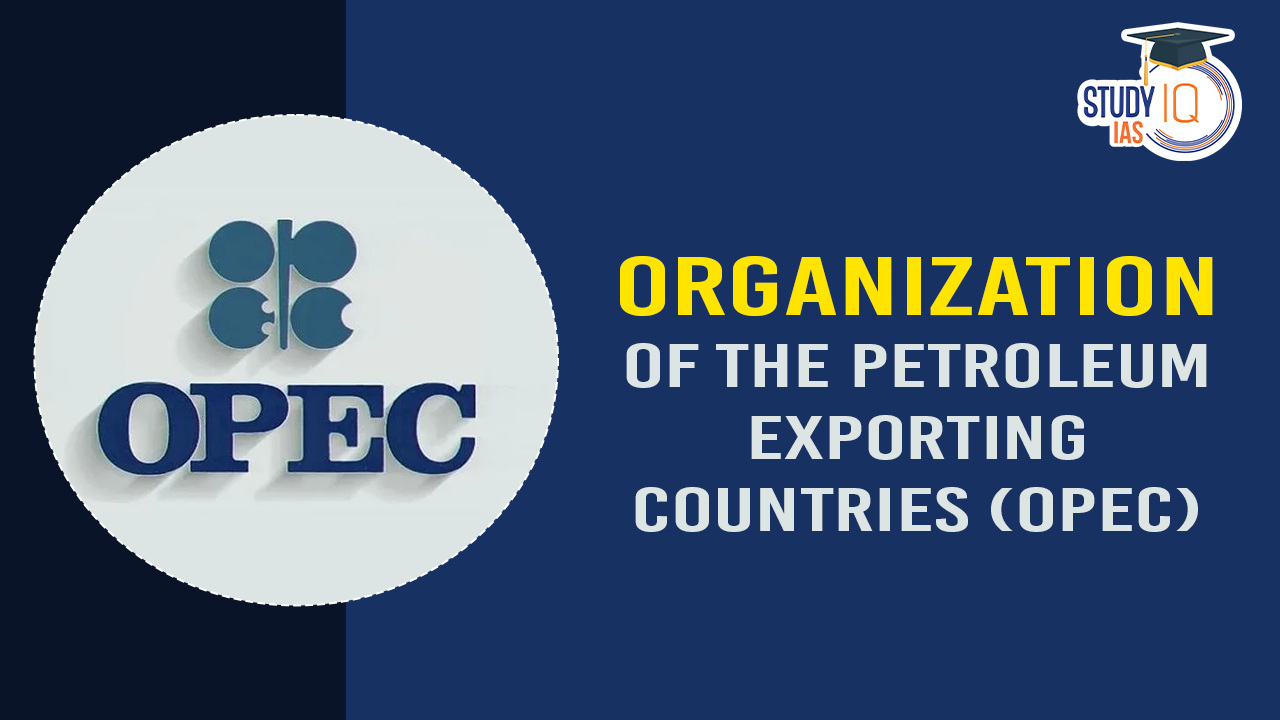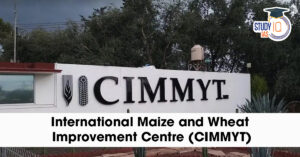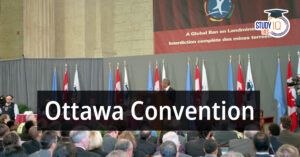Table of Contents
Context: OPEC+ decided to extend significant oil output cuts into 2025. Recently, the Brazilian government has approved its entry into OPEC+. Despite low prices, OPEC+ is expected to increase oil production.
Organization of the Oil Exporting Countries (OPEC)
- Organization of the Oil Exporting Countries (OPEC) is a permanent, intergovernmental organization, created at the Baghdad Conference in 1960, by Iran, Iraq, Kuwait, Saudi Arabia and Venezuela.
- HQ: Vienna, Austria.
- Objective: Coordinate and unify petroleum policies among member countries to stabilise oil markets, ensure fair prices for producers, and a regular supply to consumers.
- Current Members of OPEC (12 Countries): Saudi Arabia, UAE, Iran, Iraq, Kuwait, Algeria, Equatorial Guinea, Gabon, Libya, Nigeria, the Republic of the Congo and Venezuela. [Angola withdrew its membership effective 1 January 2024.]
| Important Facts about OPEC | |
| Headquarters |
|
| Foundation |
|
| Aim |
|
| Membership |
|
| Objectives and Functions |
|
What is OPEC+
OPEC+ was created in 2016 when OPEC countries decided to ally with other oil-producing countries outside the group to cut down the global output of oil.
- Objective: The decision aims to stabilise the market due to modest demand growth, high interest rates, and increasing oil production in the U.S.
- Reason for Formation: To counter falling oil prices by coordinating production cuts or increases globally.
- Key Role: Together, OPEC+ controls over 40% of the global oil supply and holds significant influence on international oil prices.
- Current Market Conditions: Oil prices are hovering around $80 per barrel, which is below the level desired by OPEC+ members to balance their budgets.
- Collaboration with Russia: OPEC+, which includes Russia, continues its strategy of deep oil output cuts that began in late 2022.
- Output Reduction: OPEC+ is reducing its oil production by approximately 5.7% of global demand, amounting to a total cut of 5.86 million barrels per day (bpd).
- Specific Cuts Extension: The group has agreed to extend the 3.66 million bpd cut, initially set to expire at the end of September 2024, to the end of September 2025.
- Gradual Phase-Out: OPEC+ plans to gradually decrease these output restrictions, starting from 2.2 million bpd in October 2024 to the end of September 2025.
- Influence of China: Rising oil inventories in developed economies like China have impacted prices.
Current OPEC+ Members
12 OPEC members and 10 non-OPEC oil-exporting countries.
- Russia, Azerbaijan, Bahrain, Brunei, Kazakhstan, Malaysia, Mexico, Oman, South Sudan and Sudan.
- Major Non-OPEC members: Russia, Kazakhstan, Mexico, Oman, etc.
- Countries like Kazakhstan and the UAE are increasing production, risking friction with leaders like Saudi Arabia.
| Facts |
| 79.5% (1,243.52 billion barrels) of the world’s proven oil reserves are located in OPEC Member Countries, with the bulk of OPEC oil reserves in the Middle East, amounting to 67.2% of the OPEC total. |
OPEC Countries List
Here is a list of the 12 OPEC member countries:
- Algeria (1969)
- Congo (2018)
- Equatorial Guinea (2017)
- Gabon (1975)
- Iran (1960)
- Iraq (1960)
- Kuwait (1960)
- Libya (1962)
- Nigeria (1971)
- Saudi Arabia (1960)
- United Arab Emirates (1967)
- Venezuela (1960)
| Fact |
| Angola: Became an OPEC member in 2007 and withdrew its membership effective January 1, 2024. This means that, currently, the Organization has a total of 12 Member Countries |


 International Maize and Wheat Improvemen...
International Maize and Wheat Improvemen...
 Ottawa Treaty 1997, Objective, Members a...
Ottawa Treaty 1997, Objective, Members a...
 US Pulls Funding from GAVI-Global Vaccin...
US Pulls Funding from GAVI-Global Vaccin...





















